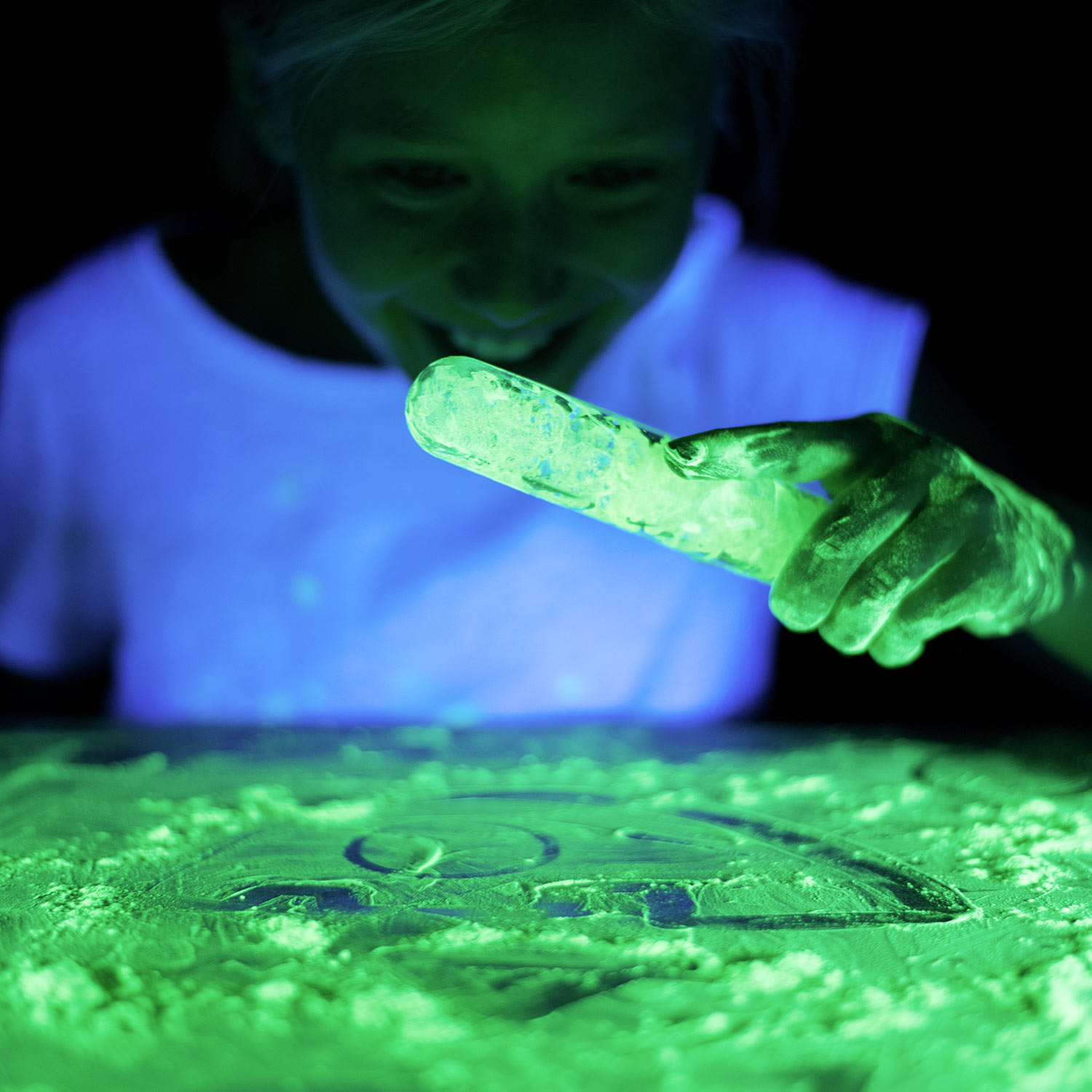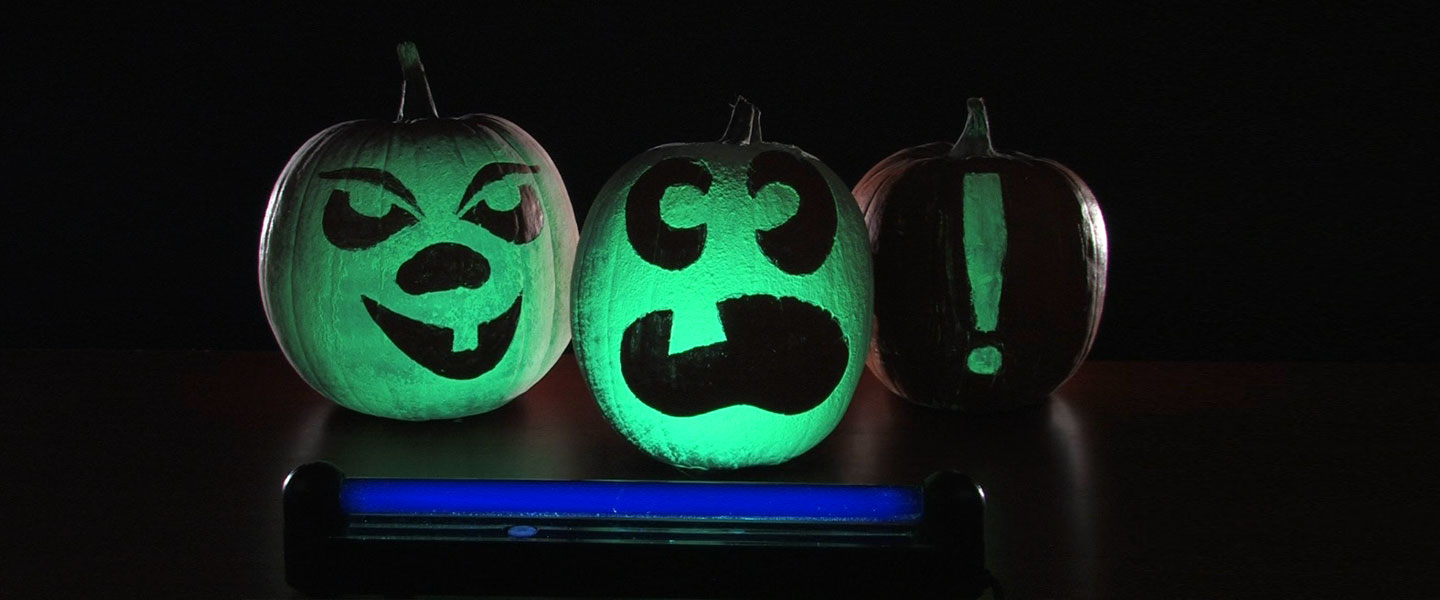
Glow-in-the-Dark Pumpkins – Glowing Pumpkin Experiment
Glowing Pumpkin Science Experiment for Halloween
Glowing Pumpkins Halloween Science Experiment
What could possibly make a jack-o’-lantern more awesome? For a spooky spin on this Halloween tradition, you could use glow-in-the-dark pumpkins instead. Decorate for Halloween with these eerie glow-in-the-dark jack-o’-lanterns for the coolest display on the block.
If you’re a fan of Spangler Science, you know that we love exploding pumpkins and puking pumpkins, so you can trust that glowing pumpkins will be just as fun as our other hits. We make it easy to enjoy a spooky, glowing Halloween creation with our special zinc sulfide Glow Powder. Just add the Glow Powder to your pumpkins for a spooky Halloween display without the mess of carving.
Experiment Materials
- Pumpkin
- Contact paper
- Glow Powder - Luminous Zinc Sulfide
- Spray glue
- Rubber band
- Thumb tack
- Aluminum foil
- Scissors
- Cup
- Permanent marker or felt pen
- Drop cloth or large cardboard box
- Black light
- Ventilation mask (if the experiment is not done outside)
- Empty salt shaker (Optional)
- Spray-on sealant
- Adult Supervision
Experiment Videos
Experiment
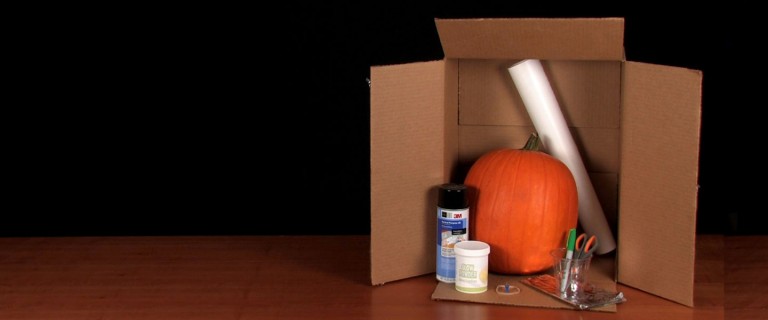
1
If you’re using real pumpkins, wipe them off with a damp cloth to remove any dirt left over from the pumpkin patch. Once cleaned, dry the pumpkin thoroughly. If you are using artificial pumpkins, make sure your pumpkin is free of stickers, packing material and dust.
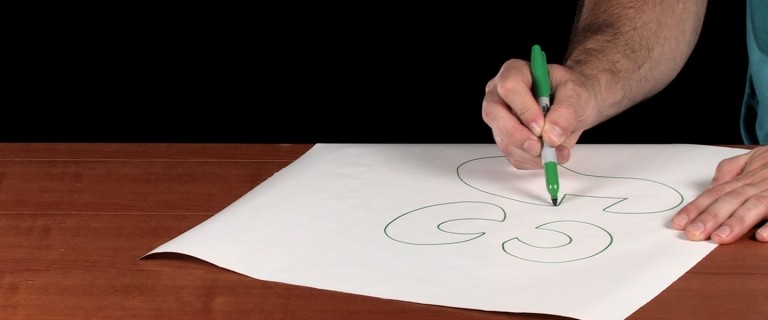
2
Draw your pumpkin design on the contact paper using a marker. Cut each piece out.
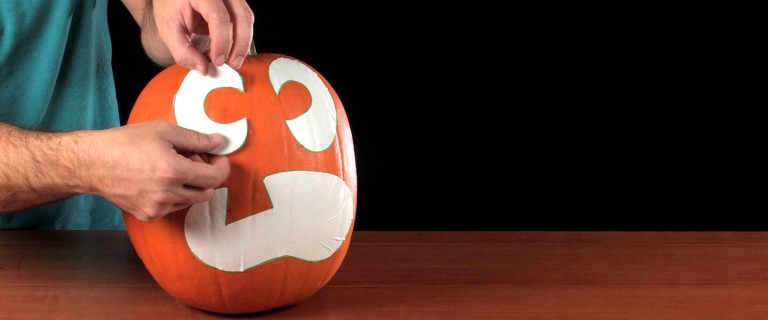
3
Peel the paper backing off each piece and carefully arrange them on your pumpkin. Once your design is complete, take your pumpkin outside and place it on the drop cloth. If you need to do the experiment indoors, make sure that you are in a well-ventilated area and that you place the pumpkin in a cardboard box instead.
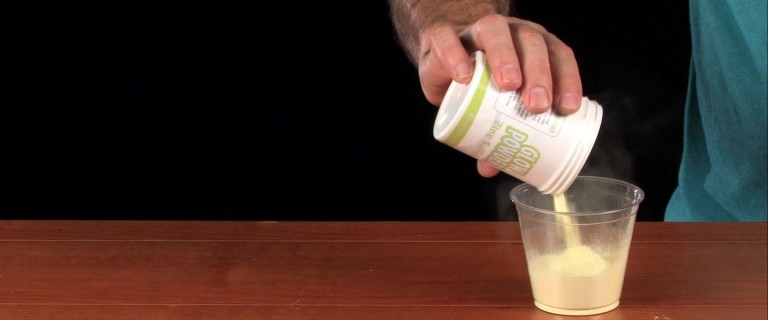
4
Prepare your Glow Powder by either putting it into an old salt shaker or by creating your own shaker.
• NOTE: To create your own shaker, place some Glow Powder in a cup and cover the cup with foil. Put a rubber band around the foil to hold it securely on the cup, then poke holes in the top using a thumb tack.
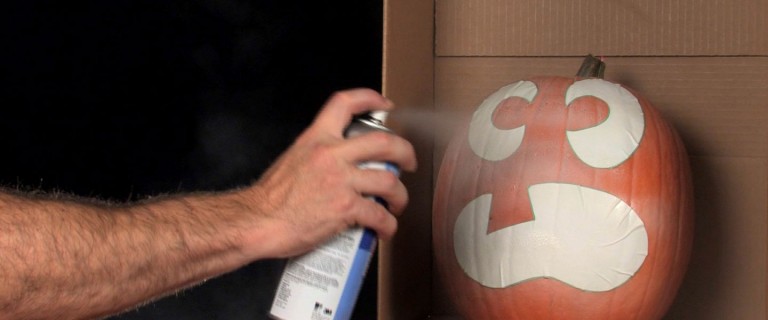
5
Spray sections of the pumpkin with the spray adhesive. For best results, hold the adhesive 4 to 6 inches (10 to 14 centimeters) away from the pumpkin and spray on a heavy coat. Make sure that the surface you’re working on is completely coated in adhesive.
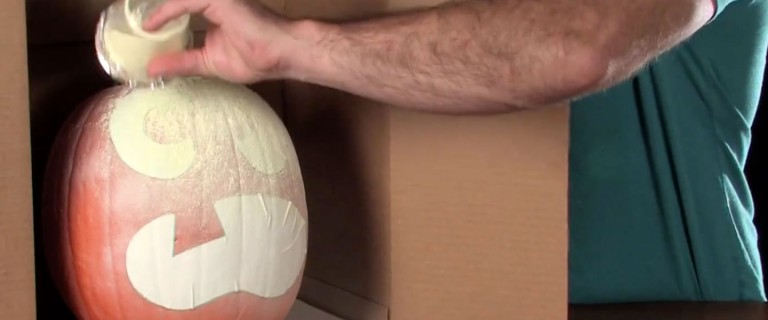
6
Immediately after spraying on the adhesive, sprinkle the Glow Powder onto the pumpkin. You may need to tilt the pumpkin to get it evenly covered.
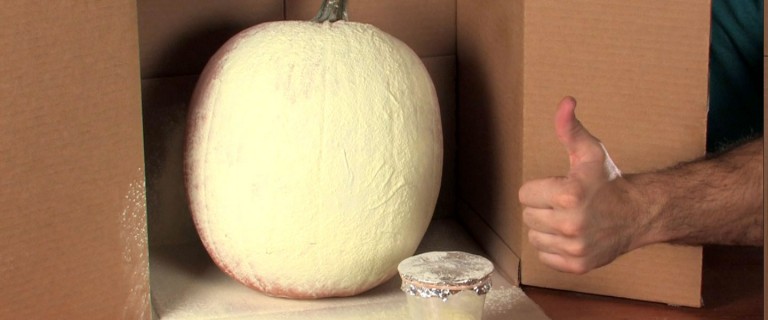
7
Continue spraying and powdering the pumpkin in sections until the entire pumpkin is completely covered. Be careful not to peel up the edges of your design while you apply the Glow Powder.
• TIP: To make your Glow Powder go further, carefully shake off any excess powder as you go, then collect the excess Glow Powder and pour it back into the shaker to reuse on another part of the pumpkin.
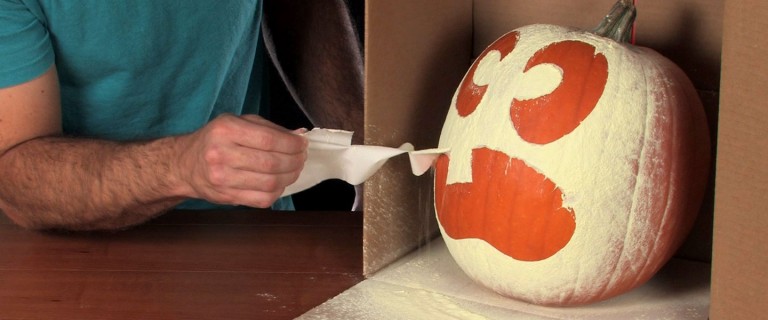
8
Allow the adhesive and Glow Powder to dry completely. After the adhesive is dry, spray the entire pumpkin with a clear sealant to make sure that the Glow Powder stays affixed to the pumpkin.
Let the sealant dry and carefully pull the contact paper off. Your spooky Halloween decoration is ready for display.
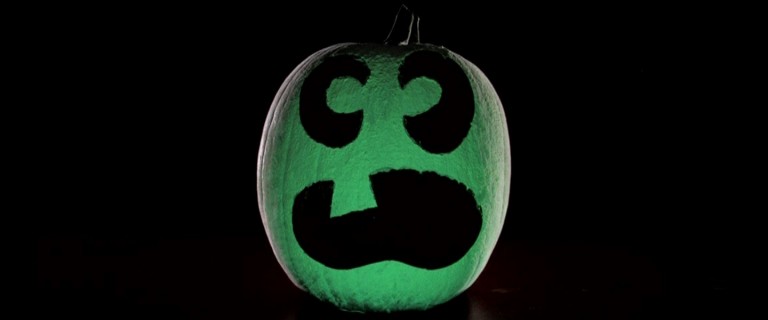
9
Want an extra-bright glow on Halloween night? Arrange your glowing pumpkins next to a black light. You can use one of our hand-held black lights or, if your pumpkins are on a front porch or part of an indoor party display, you can install black light bulbs in your lamps.
How Does It Work
• Learning about the science of things that glow requires an understanding of two important terms: fluorescence and phosphorescence. It’s also important to note that not all zinc sulfide glows, but our luminous zinc sulfide does.
• Fluorescence: This type of luminescence occurs when some form of radiation, such as light, causes an object to glow. For example, fluorescent papers and poster boards glow in the daylight. They may seem to glow even brighter under ultraviolet light. In either case, the glow stops as soon as the light is removed. Fluorescent things do not glow in the dark all by themselves. Instead, they require some other form of energy, such as ultraviolet light, to excite them.
• Phosphorescence: Phosphorescence is just like fluorescence, except that the glow continues even after the light is removed. Glow-in-the-dark toys phosphoresce brightly in total darkness after being charged, or excited, by ordinary white or ultraviolet light.
Our Glow Powder works by absorbing surrounding light energy and then releasing that energy when the lights go out. It is a phosphorescent powder.
What exactly does that mean? Imagine that an atom looks something like our solar system. The sun would be the nucleus, consisting of positive charges called protons and neutral charges called neutrons. The planets spinning around the sun would be like the electrons of an atom in an orbit around the nucleus.
When electrons become excited, they move farther away from the nucleus into more distant orbits. In order to become excited, the electrons need energy. In this case, light provides the required energy to cause the electrons to move to a higher energy level. In our solar system analogy, that would be like Earth moving farther from the sun, into the orbit of Mars or Jupiter.
For as long as they receive light to energize them, electrons will remain in their excited states. When the light is removed, the electrons will slowly return to their original, lower orbits, releasing the energy that excited them in the form of light, creating a glowing effect.
Glow Powder is the perfect way to get young ones excited about energy while celebrating Halloween. Just add Glow Powder to almost any Steve Spangler product for an eerie new take on your favorite experiment. Glow Powder is easy and safe to use, so you can get extra creative with your crafts and projects. Glow Powder also works great on large stones and rocks, just like it does with pumpkins.
Glowing Pumpkins at Your Next Halloween Party
Glow-in-the-dark jack-o’-lanterns aren’t just for Halloween night. The glowing pumpkins also make great party decorations. For more tricks and treats, check out our Oozing Pumpkin and other Halloween-themed experiments that demonstrate scientific principles. You’ll find chemistry and food science experiments that will add some wicked awesome fun, like crafting a tasty Witch’s Brew and making Boo Bubbles with dry ice. To make your costumes or Halloween décor extra gross, whip up a batch of fake blood.
Take It Further
Take It Further
Sign up for Steve Spangler Science Club to get all-in-one kits delivered to your future engineer or scientist each month. Get young ones excited about STEM and hands-on learning with our experiments and products that will not only bring out the wonder in your kids, but the oohs and ahhs as well.
Did you know?
This experiment was originally presented by Martha Stewart on her daytime show. When Martha wanted glowing pumpkins, she called us for a lot of our Glow Powder. We loved Martha’s pumpkins so much, we had to re-create them for you.





